site search
online catalog
SCARCE INDIAN WAR US ARMY 1872/76 PATTERN CAVALRY BOOT FROM FORT PEMBINA, N.D.
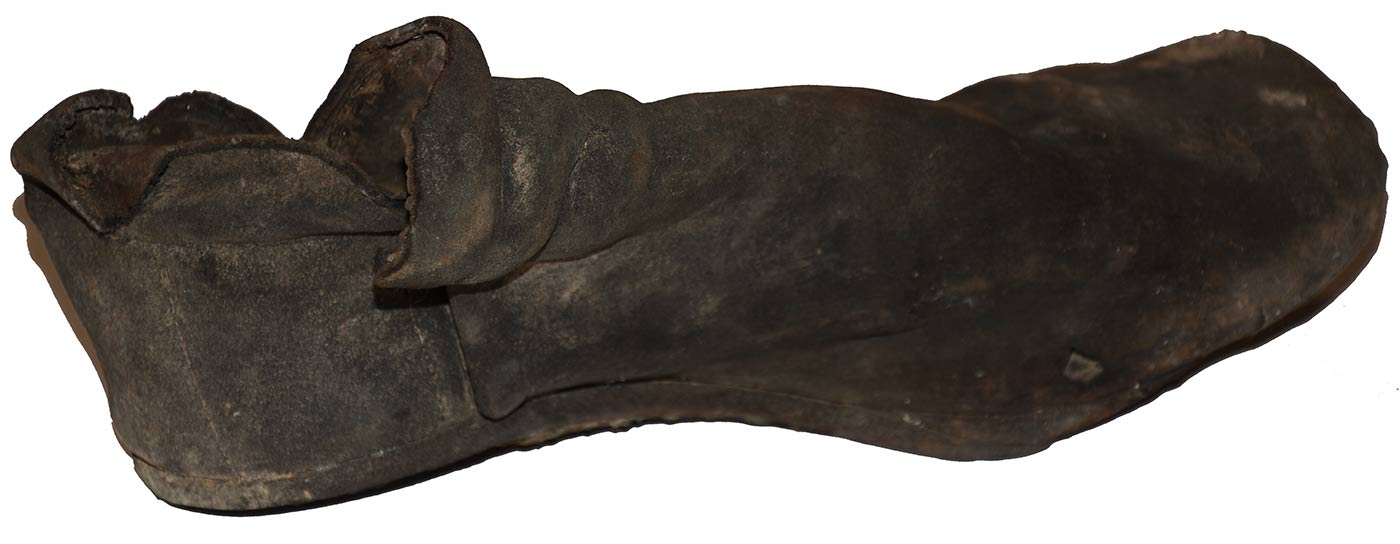
Hover to zoom

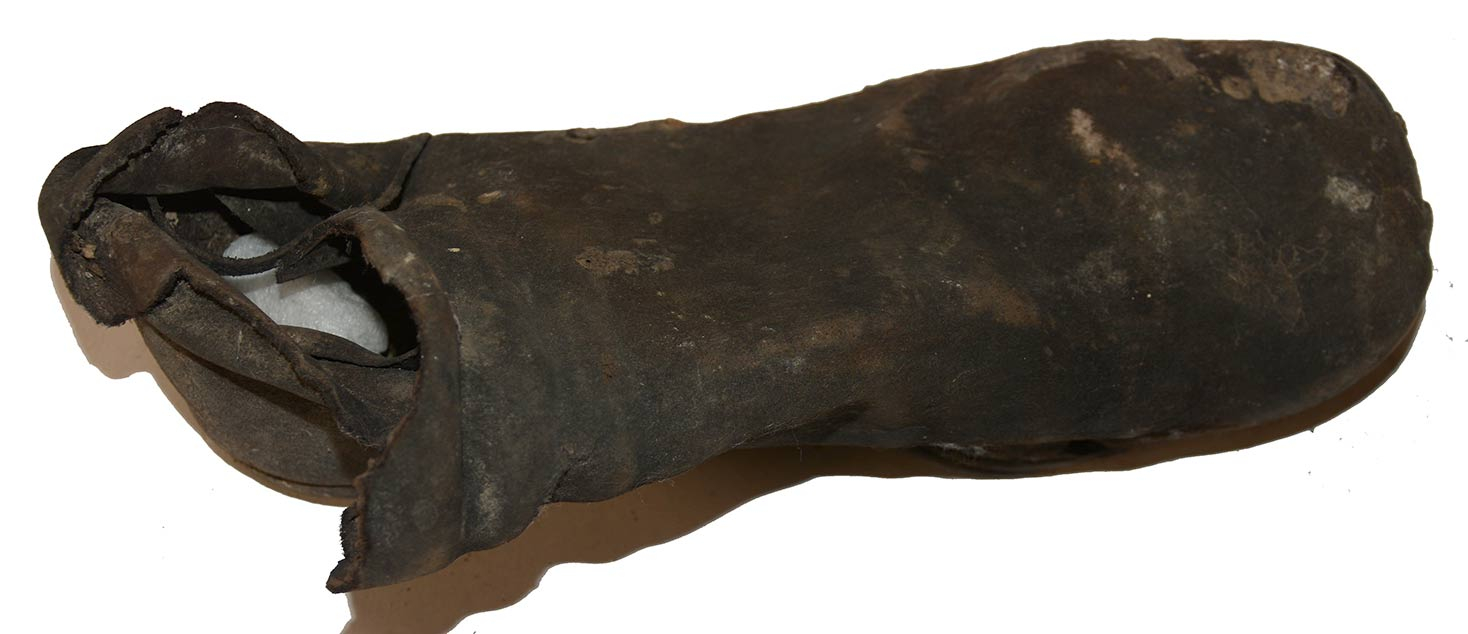
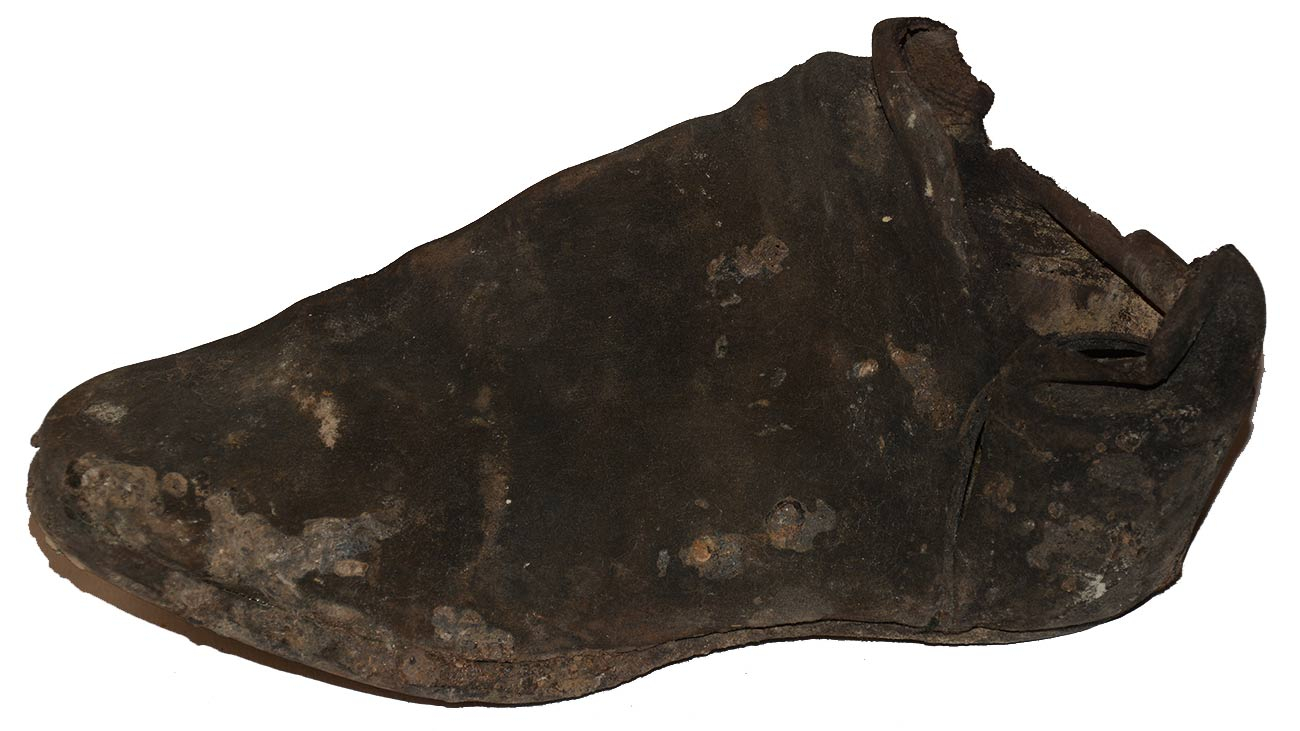
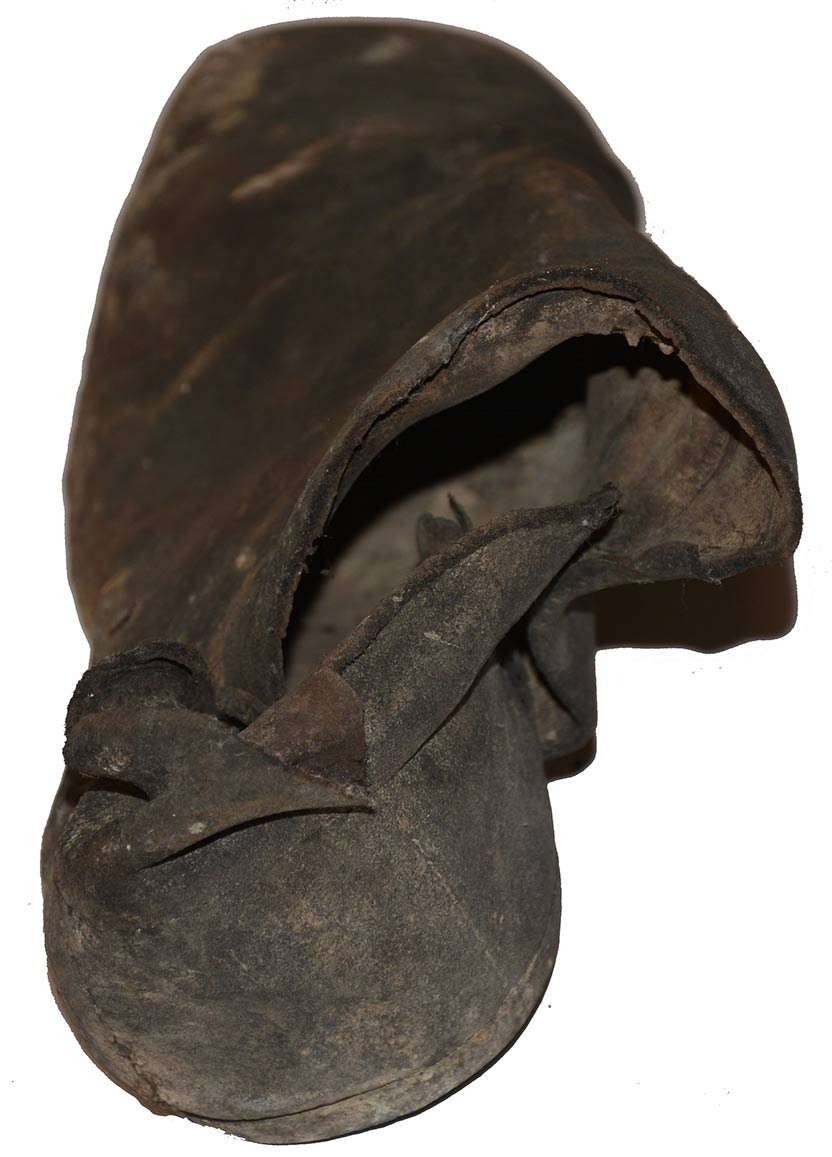
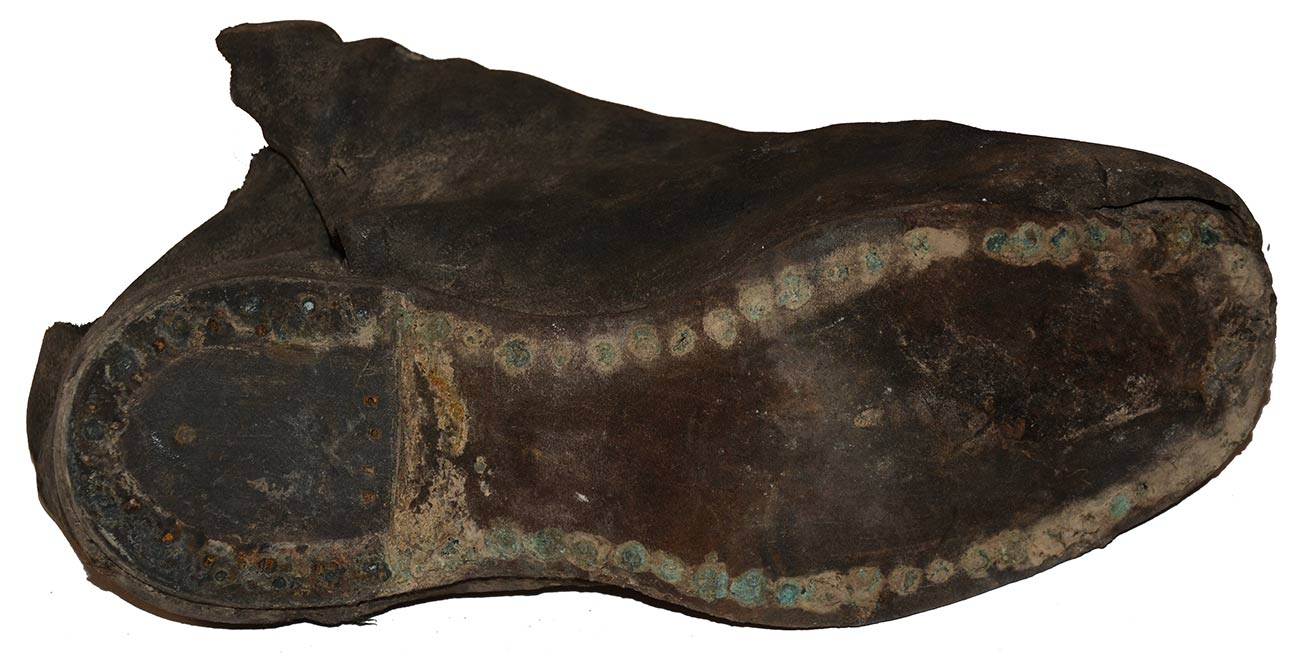
$395.00
Quantity Available: 1
Item Code: 1052-304
Shipping: Determined by Method & Location of buyer
To Order:
Call 717-334-0347,
Fax 717-334-5016, or E-mail
This scarce Indian War U.S. cavalry boot actually comes from Fort Pembina, a small U.S. Army frontier fort in North Dakota in operation from 1870 to 1895. The army introduced new shoe and boot patterns in 1872, having discovered that Civil War patterns using pegged or sewn soles were not holding up in active campaigning in the southwest, where the arid climate would dry out the leather and loosen pegs or rough, rocky ground would cut the stitching. The innovation was to use small brass screws to secure the soles.
This is an excavated example that might be taken for an attic or barn-find from its solid condition, due to the anaerobic, wet conditions of the dig, which has produced both cloth and leather gear in remarkable states of preservation. (The excavations were conducted on private property with the owner’s permission- the fort had been abandoned in 1895 and the property sold in 1902.) The soldier salvaged the leg portion of the boot before discarding shoe, likely using the leather to patch other gear or make into something else. (As it stands, it is reminiscent of the shoe portions of cavalry boots found on the Little Big Horn battlefield.) In any case, this one was probably discarded because of the wear to the sole, which shows a 2 by 3 inch oval on the wearer’s right, at the ball of the foot and toes, which has exposed the inner sole.
The brass screws are all in place, showing some corrosion. The layers of the heal are gone, but the inner sole is there and shows holes for the nails. The upper portion is made of black leather, rough side out and shows a side seam between the quarters and vamp. This could be an 1876 pattern, which differed from the 1872 mainly in height, but the brass screws point to the 1870s date and the side seam dates it before the 1884 pattern. The seam has opened up near the top on either side, but the leather is stiff and everything holds together firmly. The upper portion was cut off pretty crudely, but it is possible the soldier continued to wear them as shoes for a time. The leather has some white and gray stains, with some gray mud or residue on the left toe that has been left in place.
Fort Pembina was situated in the Red River Valley in North Dakota near the Canadian border. Trading posts existed earlier in the area as part of the fur trade, and the first U.S. military post there was temporary- manned by a detachment of Minnesota troops in 1863-1864 following the 1862 Sioux uprising. In March 1870 a new fort was established south of the Pembina River and about 200 yards west of the Red River, completed by July and named in honor of Gen. George H. Thomas. The name was changed to Fort Pembina in September and the initial garrison consisted of two companies of the 20th US Infantry. Their main purpose was to provide security for settlers worried about Sioux returning south from Canada, but much of their duty involved escorting boundary surveys along the Canadian border and preventing Fenian raids heading north into Canada.
The fort included enlistedmen’s barracks, officers’ quarters, guard house, ordnance storehouse, company kitchen, root house, laundress’s quarters, quarters for civilian employees, hospital and hospital servant’s house, a barn for the “hospital cow,” quartermaster and commissary offices and storehouse, stables, wagon shed, etc. The garrison reached peak strength in 1878 of 200, but the average was about 125 enlisted men and 8 officers. An October 1885 return listed 97 men, 2 field pieces, 1 mountain howitzer, 100 rifles, 19 pistols, 23 mules, and 9 wagons. By 1890 the post had just 23 men, and after an 1895 fire destroyed some 19 buildings it was decided to abandon the fort rather than rebuild, the last detachment left in September. The property was turned over to the Interior Department and later sold in 1902.
Army shoes and boots of the period are very scarce- they were hardly the sort of thing to be preserved by a soldier for sentimental reasons or treasured by a family in honor of the veteran’s service. Nevertheless, they were an essential piece of gear and this one was not only used at a military fort in the Dakotas, but it shows how a soldier at a remote post might well salvage what he could from issue gear either to avoid being charged for lost or damaged items, or simply because reissue might well be a problem. [sr][ph:L]
~~~~~~~~~~~~~~~~~~~~~~~~~~~~~~~~~~~
THIS ITEM, AS WITH ALL OTHER ITEMS AVAILABLE ON OUR WEB SITE,
MAY BE PURCHASED THROUGH OUR LAYAWAY PROGRAM.
CLICK HERE FOR OUR POLICIES AND TERMS.
THANK YOU!
Inquire About SCARCE INDIAN WAR US ARMY 1872/76 PATTERN CAVALRY BOOT FROM FORT PEMBINA, N.D.
Most Popular
Historical Firearms Stolen From The National Civil War Museum In Harrisburg, Pa »
Theft From Gravesite Of Gen. John Reynolds »
Selection Of Unframed Prints By Don Troiani »
Fine Condition Brass Infantry Bugle Insignia »
Large English Bowie Knife With Sheath 1870’S – 1880’S »
Imported (Clauberg) Us Model 1860 Light Cavalry Officer's Saber »
featured item
EXQUISITELY BEAUTIFUL LARGE 1862 DATED PORTRAIT OF AN UNKNOWN UNION LIEUTENANT COLONEL
This fantastic painting is oil on canvas and meas. approx. 35.00 x 39.00 inches framed. The subject is an unknown Union lieutenant colonel from the Philadelphia area. He wears a dark blue double-breasted frock coat with gold buttons and a white… (L15593). Learn More »


